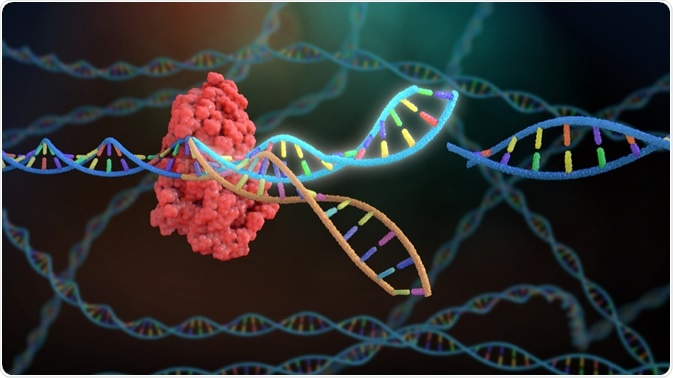 Many basic and clinical researchers are testing the potential of a simple and efficient gene editing approach to study and correct disease-causing mutations for conditions ranging from blindness to cancer, but the technology is constrained by a requirement that a certain short DNA sequence be present at the gene editing
Many basic and clinical researchers are testing the potential of a simple and efficient gene editing approach to study and correct disease-causing mutations for conditions ranging from blindness to cancer, but the technology is constrained by a requirement that a certain short DNA sequence be present at the gene editing
site.
Now investigators at Massachusetts General Hospital (MGH) have modified the system to be nearly free of this requirement, making it possible to potentially target any location across the entire human genome.
The clustered regularly interspaced short palindromic repeat (CRISPR)—associated protein 9 (Cas9) genome editing technology is a defense strategy used by bacteria to make cuts to the DNA of invading viruses.
READ ABOUT: chinese researcher who created genetically modified babies sentenced to 3 years in prison
For the CRISPR-Cas9 system to work, a bacterial defense protein called Cas9 seeks out a short region—called a protospacer adjacent motif (or PAM)—that is present in the viral DNA but not in the bacterial DNA. CRISPR-Cas9 has been harnessed for editing the human genome because such PAM sequences are also quite common in our DNA; however, genes that are not near a PAM cannot be targeted.
To overcome this hurdle, a team led by Benjamin P. Kleinstiver, a biochemist at MGH's Center for Genomic Medicine, engineered variants of a Cas9 protein that do not require a specific PAM to bind and cut DNA. The two new Cas9 variants, named SpG and SpRY, allow editing of DNA sequences at efficiencies not achievable with conventional CRISPR-Cas9 enzymes.
"Because the engineered proteins can target much more freely, they enable targeting of previously inaccessible regions of the genome," said Kleinstiver. "By nearly completely relaxing the requirement for the enzymes to recognize a PAM, many genome editing applications are now possible. And since nearly the entire genome is targetable, one of the most exciting implications is that that the entire genome is 'druggable' from a DNA-editing perspective."
The researchers next plan to better understand the mechanism of how these proteins function, while exploring their unique capabilities for a variety of different applications. In the meantime, they are optimistic that the new Cas9 variants will be a meaningful advance for the genome editing community.
They have demonstrated that these new enzymes will allow researchers to generate biologically and clinically relevant genetic modifications that were previously unfeasible.




ليست هناك تعليقات:
إرسال تعليق
Due to the high number of spammy comments we have decided to initiate comment moderation so that we can maintain our quality standards and make good environment for our visitors. Please leave your comment